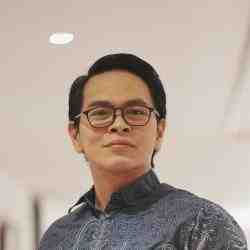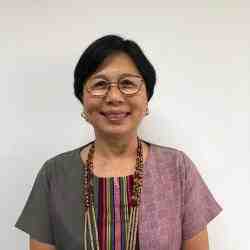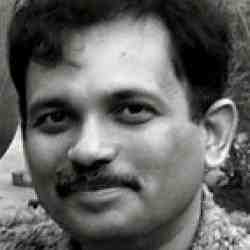Introduction
Jittaree Wanaphong, a young arts teacher who grew up in Nakornswan Province, is focusing on a giant social problem about to engulf much of Asia, the unprecedented explosion in the number of older people just as urbanization and other forces are causing the extended family to disintegrate. Jittaree hopes to introduce art as a new medium through which older Thais can reflect and express themselves and that will provide a new social nexus for those who do take it up.
L'idée nouvelle
Jittaree senses a terrible loneliness resulting from a weakening family support network that now affects an increasing portion of today's rapidly growing number of elderly Thais. No longer working and far less engaged in the family, she sees many in the new group of the elderly as feeling "bored, useless, and desperate."
Jittaree plans to challenge this painful waste by launching several complementary programs to help the elderly learn painting and ceramics. These leisure activities are well suited to this reflective stage of life and also to the limited physical capacity of many older people. Furthermore, as painting is not widely taught in Thailand, teaching access to art through painting becomes an exciting new experience, demanding thought, emotional connection, and creativity.
Jittaree feels that she can accomplish a number of social goals through helping older people develop this new skill. As older people engage in art, they will have more to share with one another and with others, including their families. Even where others aren't specifically interested in art, an interested person by virtue of that fact alone is more interesting to others. Having such an engaging excitement and the enhanced communications that come with it should reduce a good deal of these older people's loneliness. Since the problem of overcrowding in the family dwelling is due as much to poor communication as to number of rooms, relaxing this stress of loneliness will help make increasingly tight living conditions more bearable.
In addition, with the aged challenging their abilities and drawing on a life's experiences to create, their minds would be more "peaceful and meditative." Jittaree hopes that engaging a number of older people successfully and visibly in art will also help them come together and begin to raise public awareness of the emerging concerns of older people more generally. To help them band together to exchange ideas and energy and also to help them communicate outwards, Jittaree will also help organize shows, exhibits, and articles.
Le problème
Both in terms of absolute numbers and, more important, as a proportion of society, the population of older people in Asia is growing to historically unprecedented levels. Asian marketers were the first to notice this aging of their populations and are now beginning to think of the changes they must make in their products and their pitches. The rest of society, be it health institutions, public policy makers, or the private voluntary sector, has been slower.
In Thailand specifically, while the Public Welfare Department concedes that the number of elderly at homes, hospitals, and public houses (state-run nursing homes) has increased, there are no specific statistics to illustrate this immense shift in demographics. This despite the fact that applications for admission to public houses have been steadily increasing.
The change that is taking place is enormous, and if this demographic shift were not enough, its impact is being significantly magnified by the crumbling traditional family structure. As the myriad demands of mobile, increasingly urban, heterogeneous modern society consume individual family members, the family unit shrinks and becomes less unified. Parents, trying to fend for themselves and their immediate offspring, have less and less time, energy, or space left for their elders. Thus these older people end up losing not only financial and emotional support, but also the constructive, respected, involved roles that traditionally occupied their time and gave them much of their satisfaction in life.
La stratégie
Jittaree plans to spread these new activities for older people using a variety of methods and making extensive use of volunteers and existing institutional structures.
Initially using the Houses for the Aged of the Public Relief Department of the Ministry of the Interior in Bangkok, Jittaree will open arts courses for older people (60 to 75 years old). These primary courses will teach the nature, methods, and techniques of water and oil colors, using volunteers as art teachers and public- house elderly activities budgets as partial funding sources for instruments and supplies.
To expand and publicize the idea, Jittaree plans to set up exhibits and seek coverage and even advertise in newspapers and magazines. Later on, she hopes that the program will spread by word of mouth. She especially hopes that a growing number of service organizations will take up the needs of older people and, recognizing the value of her approach, adapt it to their specific clients' needs.
After expanding up-country so as to include the rural aged, the final phase of the program would be to establish a series of arts associations for the aged starting within the public houses. These associations would further perpetuate the institutionalization of the program by marketing paintings, organizing exhibits, and locating funding that would guarantee access to the courses for those too poor to afford them.
La personne
Jittaree Wanaphong was born in Amphoe Phayuha Kiri in Nakornswan, Thailand. After getting her B.A. in education at Sri Nakharinwiroj University (at Prosarnmity), she has held several arts-related jobs, notably including the "Siang Dek" (Voices of Children) newspaper where, among other roles, she drew cartoons and wrote tales for children.
Jittaree has worked in design, most recently for Urban assets Co., Ltd. She has also organized an arts exhibit for Peace Day and has helped the artists' campaign against AIDs.




